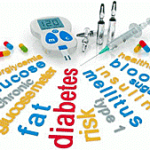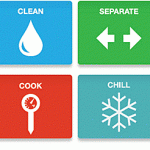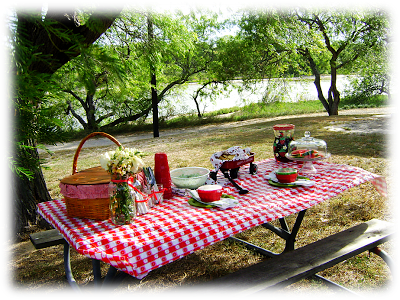
by sbouie | Nov 16, 2016

Photo credit: www.thailandblog.nl
Maybe you know someone in your family, a friend, or a co-worker that has diabetes. Diabetes affects not only the person but the entire family. This article will discuss the types of diabetes and symptoms. Education concerning diabetes begins at home. Once we are educated, we can teach our family and the younger generation.
Type 1 diabetes is usually diagnosed in children and young adults and was previously known as juvenile diabetes. Only 5% of people with diabetes have this form of the disease. In type 1 diabetes, the body does not produce insulin. The body breaks down the sugars and starches you eat into a simple sugar called glucose, which it uses for energy. Insulin is a hormone that the body needs to get glucose from the bloodstream into the cells of the body.
Type 2 diabetes is the most common form of diabetes. If you have type 2 diabetes, your body does not use insulin properly. This is called insulin resistance. At first, your pancreas makes extra insulin to make up for it. But, over time, it isn’t able to keep up and can’t make enough insulin to keep your blood glucose at normal levels.
Gestational Diabetes – During pregnancy, usually around the 24th week, many women develop gestational diabetes. A diagnosis of gestational diabetes doesn’t mean that you had diabetes before you conceived or that you will have diabetes after giving birth. However, women who’ve had gestational diabetes have a 35 to 60 percent chance of developing type 2 diabetes in the next 10 to 20 years after giving birth.
Some common symptoms of diabetes include urinating often; feeling very thirsty; feeling very hungry – even though you are eating; extreme fatigue; blurry vision; cuts/bruises that are slow to heal; weight loss – even though you are eating more (type 1); tingling; pain; or numbness in the hands/feet (type 2).
Food selection is a key element of living with diabetes. It is easy to find diabetes cookbooks and recipes online to assist in adjusting your diet. It is easy to find a list of starchy vegetables to avoid as well as other foods that should be eliminated from one’s diet.
Exercise also is a very important factor when living with diabetes. A good exercise program along with a proper diet will help decrease your risk of diabetes.
Source: American Diabetes Association
by sbouie | Aug 28, 2016
 September is National Food Safety Month. However, food safety should be practiced every day of the year and for every meal and/or snack. We live in a busy society. We are always in a rush to do and to go to whatever we have planned.
September is National Food Safety Month. However, food safety should be practiced every day of the year and for every meal and/or snack. We live in a busy society. We are always in a rush to do and to go to whatever we have planned.
When it comes to our food, we need to make the time to observe steps to food safety. Food safety will decrease the opportunity for food borne illness. The steps are as follows:
- Clean – everything that touches the food. This includes hands, utensils, surfaces, and foods – fruits, vegetables, but not meats or eggs. Wash hands in hot water and soap for at least 20 seconds. Bacteria can get on cutting boards and utensils. Rinse fresh fruits and vegetables under running tap water, including those with skins and rinds that are not eaten. Rub firm-skin fruits and vegetables under running tap water or scrub with a clean vegetable brush while rinsing with running tap water.
- Separate – surfaces used for raw meats and eggs from other foods or surfaces when shopping, storing, preparing, and cooking. This will prevent cross-contamination.
- Cook – food at the correct temperature by using a food thermometer (see the chart below). The danger temperature zone is 400 to 1400 Fahrenheit. This is when bacteria rapidly grows.
- Chill – Refrigerate perishable foods within two hours. Never thaw or marinate foods on the kitchen counter.
After you remove meat from a grill, oven, or other heat source, allow it to rest for the specified amount of time. During the rest time, its temperature remains constant or continues to rise, which destroys harmful germs.
| Category |
Food |
Temperature (°F) |
Rest Time |
| Ground Meat & Meat Mixtures |
Beef, Pork, Veal, Lamb |
160 |
None |
| Turkey, Chicken |
165 |
None |
| Fresh Beef, Veal, Lamb |
Steaks, roasts, chops |
145 |
3 minutes |
| Poultry |
Chicken & Turkey, whole |
165 |
None |
| Poultry breasts, roasts |
165 |
None |
| Poultry thighs, legs, wings |
165 |
None |
| Duck & Goose |
165 |
None |
| Stuffing (cooked alone or in bird) |
165 |
None |
| Pork and Ham |
Fresh pork |
145 |
3 minutes |
| Fresh ham (raw) |
145 |
3 minutes |
| Precooked ham (to reheat) |
140 |
None |
| Eggs & Egg Dishes |
Eggs |
Cook until yolk and white are firm |
None |
| Egg dishes |
160 |
None |
| Leftovers & Casseroles |
Leftovers |
165 |
None |
| Casseroles |
165 |
None |
| Seafood |
Fin Fish |
145 or cook until flesh is opaque and separates easily with a fork. |
None |
| Shrimp, lobster, and crabs |
Cook until flesh is pearly and opaque. |
None |
| Clams, oysters, and mussels |
Cook until shells open during cooking. |
None |
| Scallops |
Cook until flesh is milky white or opaque and firm. |
None |
Food is for the nourishment of our body, not to make us sick. Take the time to clean, separate, cook, and chill foods to avoid food borne illness. For more detailed information and videos, visit www.foodsafety.gov and www.fightbac.org.
Sources: www.foodsafety.gov; www.fightbac.org

by sbouie | Jul 17, 2016
 Picnics are a great opportunity for families to enjoy the great outdoors. It provides time to experience special bonding while enjoying the fresh air and delicious food. However, we should always be cautious of food borne illness.
Picnics are a great opportunity for families to enjoy the great outdoors. It provides time to experience special bonding while enjoying the fresh air and delicious food. However, we should always be cautious of food borne illness.
Let’s keep food and your family safe from the start! Whether the foods are from home, a store, or restaurant, follow the simple rules of keeping hot foods hot and cold foods cold. Remember that bacteria can grow fast at temperatures between 40°F and 140°F – the Danger Zone. Eat and promptly chill leftovers within two hours, and if the outside air temperature is above 90°F, do so within one hour.
If you plan to cook on site, make sure raw meats are packed well and are separated from ready-to-eat foods to prevent any cross-contamination. All perishable foods must be kept cold (40°F or below) in insulated boxes with enough ice, frozen gel packs, or other cold source, such as a container of frozen water. If possible, bring an appliance thermometer along to monitor the box temperature. When you grill the meat, make sure it is cooked to the right temperature. Also, bring enough potable water if none will be available at the site, and pack clean, wet, disposable cloths or moist towelettes and paper towels for cleaning hands and surfaces. Keep your tailgate party fun and bacteria-free for your family’s well-being!
Besides the food, plan your time. Plan some fun outdoor games that the entire family will enjoy. You may even plan a nature walk, name the cloud’s shape, or be creative and create your own activity. Whatever you plan, always involve the entire family. Every family member should be included.
This is the best time to say “no electronic devices.” This is time for the family to have face time without interruptions – time to talk to each other and grow closer. Picnic time translates “it’s family time” – eating outside in the fresh air and enjoying your family.
Reference: Food Safety and Tailgating, Amy Simonne. EDIS Publication #FAR8712
by sbouie | May 30, 2016
 Tax season is a very difficult time of year for many people. It is a time when good record keeping is vital. The preparation fee is expensive for many families. Some use computer software to avoid fees. However, in doing so they may overlook some tax deductions.
Tax season is a very difficult time of year for many people. It is a time when good record keeping is vital. The preparation fee is expensive for many families. Some use computer software to avoid fees. However, in doing so they may overlook some tax deductions.
Free tax preparation has always been offered at the Jefferson County Extension office in Monticello, FL. This year the Tallahassee United Way Volunteer Income Tax Assistance (VITA) personnel partnered with the UF/IFAS Jefferson County Extension Office, where they prepared free taxes at the Jefferson County R.J. Bailer Public Library. Appointments were reserved through the library.
A total of 312 Jefferson County residents were helped. The United Way estimated a total of $85,176 were saved in tax preparation fees. Providing these free services to the Jefferson County citizens was a great benefit. For more information, contact UF/IFAS Extension, Jefferson County http://jefferson.ifas.ufl.edu
The UF/IFAS Leon and Madison County Extension Offices also provided VITA for their citizens. They use the traditional Skye Program in collaboration with United Way.

by sbouie | May 19, 2016

Family game night promotes bonding.
Photo credit: commons.wikimedia.org
Warmer weather is here and it is time to plan some fun activities with the family. This is also the time of year when many city organizations have prepared outstanding festivals. Most festivals have something for everyone in the family.
It is always important to socialize as a family. This increases family bonding. Time together, whether outdoors or inside, is vital. There are numerous ways to bond with your family, such as:
- Eating meals together
- Attending children’s extra-curricular activities together
- Reading together
- Going to the library as a family
- Volunteering together
- Family movie night
- Family game night and many more
There are many benefits to planning and having family bonding time. These include:
*Educational Benefits
- Increased focus on homework and reading for pleasure (Eisenberg, Olson, Neumark-Sztainer, Story, & Bearinger, 2004)
- Improved school performance (Hamilton & Wilson, 2009)
- Greater development of language skills (Snow & Beals, 2006)
- Increased and more sophisticated level of vocabulary (Snow & Beals, 2006)
Health Benefits
- Improved development of healthy eating patterns (Hamilton & Wilson, 2009)
- Higher intake of several essential nutrients (Croll, Hannan, Neumark-Sztainer, Perry, & Story, 2003)
- Decreased likelihood of having eating disorders (Ackard & Neumark-Sztainer, 2001)
- Decreased likelihood of being overweight (Fulkerson, Kubik, Story, Lytle, & Arcan, 2009)
- Less likely to develop depressive symptoms (Fulkerson et al., 2009)
Social and Behavioral Benefits
- Less likely to be involved with cigarette, alcohol, and marijuana use (Eisenberg et al.,2004)
- Increased sense of family connectedness, communication, and functioning (Hamilton &Wilson, 2009)
- Increased likelihood of resisting negative peer pressure (Fulkerson et al., 2006)
- More likely to experience positive identity assets (Fulkerson et al., 2006)
- Less likely to attempt suicide (Fulkerson et al., 2006)
- Less likely to engage in sexual intercourse (Fulkerson et al., 2006)
Overall Benefits for the Family
- Regular and consistent family time
- Reduction of anxiety and depression in children
- Increased feelings of togetherness, coherence, and solidarity
- Increased emotional and social bonding
- Shared nutrition
- Relaxing, talking, and laughing as a family unit
Family bonding sets the foundation for a strong family. Family bonding gives your children stories for their present and later years. Enjoy your family time!
*”Benefits of Family Meals”, Varnessa McCray, Victor W. Harris, and Martie Gillen, This document is FCS2324, one of a series of the Department of Family, Youth and Community Sciences, Florida Cooperative Extension Service, Institute of Food and Agricultural Sciences, University of Florida. Original publication date April 2013. Visit the EDIS website at http://edis.ifas.ufl.edu.








